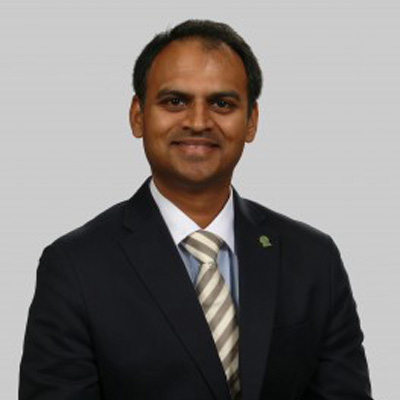
Health Tips brought to you by U.S. HealthWorks Medical Group. Our experienced medical experts provide information here that we hope will broaden your healthcare knowledge.
Today’s topic is obesity, and Dr. Anuruddh Misra, medical director for U.S. HealthWorks in South San Francisco, is helping us understand more about this epidemic. Dr. Misra is double Board Certified in Sports Medicine and Internal Medicine.
Q: Obesity is in the news again, and it appears we as a nation are not doing well on this front. Can you tell us what is going on today in regards to obesity?
A: Obesity is the unifying diagnosis to an entire host of medical problems, including (and not limited to) chronically elevated blood pressure, stroke, heart attacks, type 2 diabetes, and obstructive sleep apnea. The CDC estimates more than one-third of our American population is either overweight or obese, and I believe this is rather conservative estimate.
The first order of business to address obesity is by way of dietary correction.
The harsh reality is that we, as a society, are not taught in our educational system, or by leading health care professionals, how to eat healthy or even how to approach eating outright. This lack of knowledge or relative nutritional illiteracy results in poor habits, which directly and/or indirectly lead to obesity.
Q: Can you provide some simple tools for people to get a better understanding of calories and nutrition as a starting point?
A: Yes. During my sports medicine fellowship at The Andrews Institute, when it came to counseling professional and aspiring professional athletes on how to approach nutrition, it was important to first teach them the three reasons one eats at all:
- Nutritional purposes
- Social obligations
- Pleasure/comfort
With this understanding, I further instruct my patients of all walks of life (athlete or otherwise) from a sports nutrition and exercise physiology vantage point to follow the “80-20 rule” – eat like an Olympic athlete 80% of the time, however allow for pleasure eating and eating for social reasons 20% of the time.
This way, the patient understands how to eat in proper proportions on all three fronts, so their eating habits should not impair their performance goals. And just as importantly, eating in this proportion keeps whatever specialized diet they may need much more sustainable. A “90-10” diet is extremely difficult and “100-0” nearly impossible; even if it were possible, it would not be sustainable for long.
I find it pivotal for the individuals I care for to grasp the calorie/nutrition ratio of all calories consumed. The term “empty calories” refers to calories consumed that carry little to no nutritional value. For example, 200 calories of watercress carries a tremendous wealth of nutritional value when compared to 200 calories of any soda. This three-minute YouTube cartoon from AsapSCIENCE (based in Canada) helps people visualize 200 calories. It is especially helpful for those who are getting started in the learning process of nutritional caloric intake.
Simply put, we as an industrialized nation eat too often, and when we do eat, we eat too much. This is out of sync with our evolutionary history. In our early existence as a species we could (and often would) go days or weeks without any reliable caloric source. As a result, our physiology responded by creating metabolic pathways to become extremely adept and efficient at saving and storing away extra calories when consumed, if they ever were to come available. These stored calories in the form of adipose tissue (fat stores) would serve as an emergency energy reservoir for periods of time when no calories were available. You can see the comparison of protein and carbohydrates to fat as an energy store in the table below:
This is why fat stores are almost an indefinite source of energy. This process – while once essential to our survival as a species – is now the precise physiological mechanism responsible for obesity given how remarkably easy it is to consume calories versus the infancy period of our human existence. It is so easy to consume excess calories now with little to no commensurate caloric expenditure to attain the same. Compare going to the grocery store today versus harvesting a field with no modern technology, milking a cow, or hunting with rudimentary weapons as was done hundreds and thousands of years ago. The caloric expenditure between the two is dramatically different in comparison to attaining the same food products.
Processed foods take this concept to heights previously inconceivable. Consider the amount of sugar concentrated in a 20-ounce bottle of soda pop. That’s the same as eating approximately eight feet of sugar cane – a physical impossibility – yet on a daily basis I see my patients and many others easily drinking 1-2 of these “doses” of sugar each day. This is a horrible insult to our pancreas, and advances the breaking point of our systems at a rate more rapid than anything else ever could have prior to the advent of processed foods. This stripping away of all the nutritional value (fiber) in exchange for such a severe metabolic (sugar) hit is a good example of how and why the obesity epidemic has so rapidly reached the point it has today, in a manner that does not seem “that bad” on the surface (e.g. drinking just one bottle of soda pop).
Q: Aside from medical opinions, are there any studies to help people understand how to do better when it comes to lifestyle that will help prevent obesity?
A: Yes. I was extremely impressed with the findings from the work of Gianni Pes and Michel Poulian of the “Blue Zones,” which studied places and demographics on earth that have the highest percentage of centenarians (those routinely crossing 100 years of age). Sadly only one “Blue Zone” exists in America (Loma Linda, Calif.). Pes and Poulian distilled their findings to six common traits to extend life to the maximum length with the best potential concurrent health possible:
- Strong family support system
- No smoking
- Plant-based diet, or as close to a vegetarian diet as possible
- Constant moderate physical activity (there is excellent scientific evidence for this also available at excerciseismedicine.org)
- Strong social engagement into the communities they belong to (and others)
- Legumes – to be consumed on a regular basis
Q: Any other recommendations apart from the above?
A: Yes. Eat less. While this is easier said than done, we are overburdening our system with a caloric surplus like never before. This results is a long list of otherwise completely preventable devastating medical problems, which I, as an Internist and Sports Medicine physician, am unfortunately all too familiar with. There is a quote from an Egyptian pyramid dated from 3800 B.C. that translates into, “Humans live on one-quarter of what they eat; on the other three-quarters lives their physician.”
One of the best approaches to eating less is intermittent fasting (IF). One of the reasons IF has not gotten more attention is one cannot make money simply from telling people to eat less; there is no product of any kind to sell with this message. On the other hand, the weight loss industry makes billions of dollars each year selling every conceivable weight-loss product ranging from pills to books and videos of all sorts of diets and supposedly the “best” weight-loss plans, as if it were some incredible trade secret known only to them. This sadly feeds directly into our consumer-based culture and satisfies the “easy way out” so many wish for — why do the hard work when I can just cure this problem with a pill?
I teach intermittent fasting to my patients who need it the most, and share with them a TED video to explain IF as a starting point per the scientific evidence as to why they should do it, as I do. The one-hour BBC documentary, available here, not only forever changed my life by hopefully extending it with better health, but has helped me help so many individuals who needed to know the science of the same.






